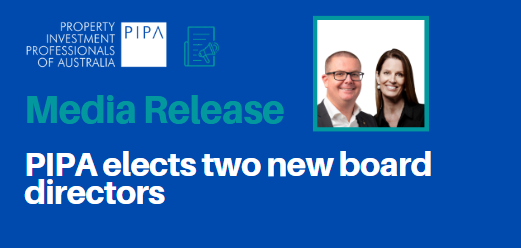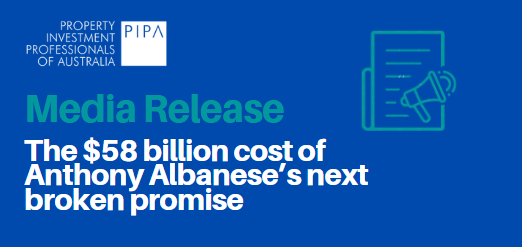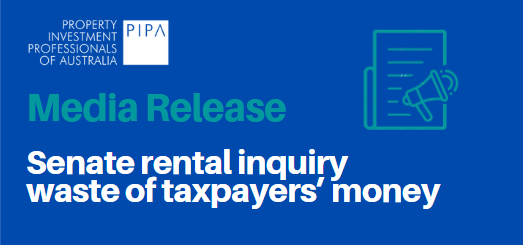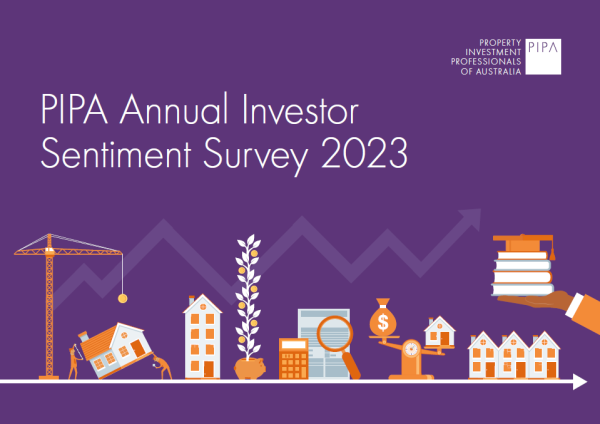“Knee-jerk” policies created rental crisis
Mar 2023Karen Millers
Categories
Location ReportsMedia releasesNational market updatesPersonal advisersPIPA AdviserPIPA Annual Investor Sentiment SurveysPIPA Member ProfilesPIPA video updatesPIPA webinarsPodcastsProperty advisersProperty newsLatest Articles
Which property cycle are we in?
Rent rises ease but crisis’ link to population density found to be tenuous
Jordan van den Berg: The ‘Robin Hood’ TikToker taking on Australian landlords
Victorian property investors face yet another new property tax as council tests levy
Years of knee-jerk property policies and legislation created the current rental crisis, according to the Property Investment Professionals of Australia (PIPA).
At the 2023 PIPA Brisbane breakfast seminar on Wednesday last week, an expert panel outlined potential solutions to the critical rental undersupply, but also explained some of the reasons how the rental crisis was created.
PIPA Chair Nicola McDougall said nearly a decade of knee-jerk policies in the property investment space in particular had reduced the volume of investors and ultimately the supply of rental properties across the nation.
“Since late 2014, we have seen investor-targeted APRA lending restrictions come and go; negative gearing and Capital Gains Tax laws continually on the chopping block; emergency tenancy laws enacted during the pandemic; and mooted rental caps now being the latest attack on investors,” Ms McDougall said.
“Given property investment should be a long-term strategy, no wonder hundreds of thousands of investors are offloading their properties in reaction to the head-spinning array of financial and legislative imposts that are forever levelled at them.”
REIQ CEO Antonia Mercorella, CoreLogic Asia-Pacific Executive Research Director Tim Lawless, and financial and housing market expert Pete Wargent were the expert panellists who presented potential solutions to the current southeast rental crisis at the 2023 PIPA Brisbane breakfast seminar on Wednesday.
Ms Mercorella said legislative issues were continuing to have an impact on the psyche of investors to the detriment of rental supply.
“Investors are becoming increasingly frustrated with legislative intervention that effectively handcuffs them and limits what they can and can’t do in a way that we don’t necessarily see in any other asset class,” Ms Mercorella said.
“You only have to look at the number of properties that have been transferred from the long term permanent rental market into short-term letting, as well as the volume that have been sold to see their frustration in action.”
Mr Wargent said while there is currently a rental shortage that is pushing rents higher that situation is invariably followed by a glut.
“I know it doesn’t feel like it today, but it wasn’t so many years ago here in Brisbane that there were units going up all over the place and rents were fallings,” Mr Wargent said.
“There’s billions and billions of dollars of capital being raised in the build to rent sector, so, we’re likely going to get a glut in three or four years’ time.
“The rental shortage will be solved in time, so, it’s more a question of what do you want the rental markets to look like?”
Likewise, Mr Lawless said long term trends in the rental market were vastly different to the double-digit annual increases of the past two years, with rents typically increasing at around three per cent annually.
“Over the short to medium term the rental supply outlook is looking pretty glum. From a new dwellings’ perspective, approvals are at their lowest level in more than a decade. Across the medium to high density sector, dwelling approvals have mostly been below the decade average since 2018,” he said.
“It’s encouraging to see more funding for social and community housing in the wings but, from a federal funding perspective, these aren’t budgeted until 2024 and you would expect that even then it will take a couple of years for this supply to be completed.
“Rental supply from private sector investment is still going backwards after the number of investment home loans has consistently declined since early 2022.”
CoreLogic data shows that average monthly rental prices have increased by $290 over the past year, but repayments on a $500,000 mortgage have increased by a bit over $800 per month.
PIPA Chair Nicola McDougall said the number of investors active in the market had fallen to the lowest level since August 2020, according to the latest ABS Lending Indicators.
“Higher interest rates, as well as the three percentage point servicing buffer, is preventing many investors from transacting, which is reducing the supply of rental properties even further,” she said.
“The last time the number of investor loans was this low was in the early months of the pandemic when most of us were in lockdown and everyone was fearful of what lay ahead. That is an extraordinary comparison to make, and situation to be in again.”
At the breakfast, Ms Mercorella said it was vital that legislation and regulatory frameworks worked in all markets and not just for specific moments in time.
“We know what a healthy vacancy rate looks like – it’s between 2.6 per cent to 3.5 per cent – and we are sitting well below one per cent across most parts of Queensland, so, we are worlds away from a healthy market,” Ms Mercorella said.
“But governments must accept responsibility for the position we find ourselves in here in Queensland. There are around 640,000 residential tenancies and the vast majority of these are being provided by private investors, who do the heavy lifting when it comes to housing Queenslanders.
“The more you legislate, the more you’re just going to drive people away from permanent rental markets and either into short-term letting or into selling.”
Mr Wargent said property under- and over-supplies are always remedied over time as more supply is constructed and consumer behaviour changes.
“When rents rise too quickly, people start pushing back. They either move to a different city, they stay at home, they live with their parents for longer, we see average household sizes increasing and more people flat sharing,” Mr Wargent said.
“If you want to encourage investment in any sector – it doesn’t matter if it’s energy, property, or whatever – you need a stable regulatory framework to give people confidence to invest in. Knee-jerk reactions or price caps never work in economics traditionally.
“A good starting point needs to be removing the current lending assessment buffer.
That was an extraordinary measure for an extraordinary time and if people want to borrow, then let them borrow. “There’s no point in stopping people from borrowing if they want to supply the market.”
At the breakfast, Mr Lawless said that new supply and increased investor activity were both on the horizon, but there was no quick fix to the current rental crisis. “Once there’s some stability in the market, we are likely to see more investment, however, governments should also have a bigger stake in rental home ownership,” Mr Lawless said.
“If you look at dwelling approvals historically, back in the ‘70s and ‘80s, governments were building about 10 per cent to 15 per cent of housing stock. Over the past 15 or 20 years, that’s consistently been around two per cent to three per cent.
“So, they’re really passed the chalice of rental housing responsibility to the private sector and now they’re trying to regulate the private sector – I think unfairly.
“The biggest thing they can do is to take a bigger stake of home ownership – which could be in the form of social and community housing – but there’s no immediacy in delivering that to the market when it’s so severely needed at the moment.”
ENDS
For more information, or to organise an interview with Nicola McDougall, please contact:
PIPA | media@kieranbricksandmortarmedia.com.au
For more information, or to organise an interview with Antonia Mercorella, please contact:
REIQ | media@reiq.com.au
For more information, or to organise an interview with Tim Lawless, please contact:
CoreLogic | media@craig.mackenziecorelogic.com.au
For more information, or to organise an interview with Pete Wargent, please contact:
Pete Wargent | pete@allenwargent.com




